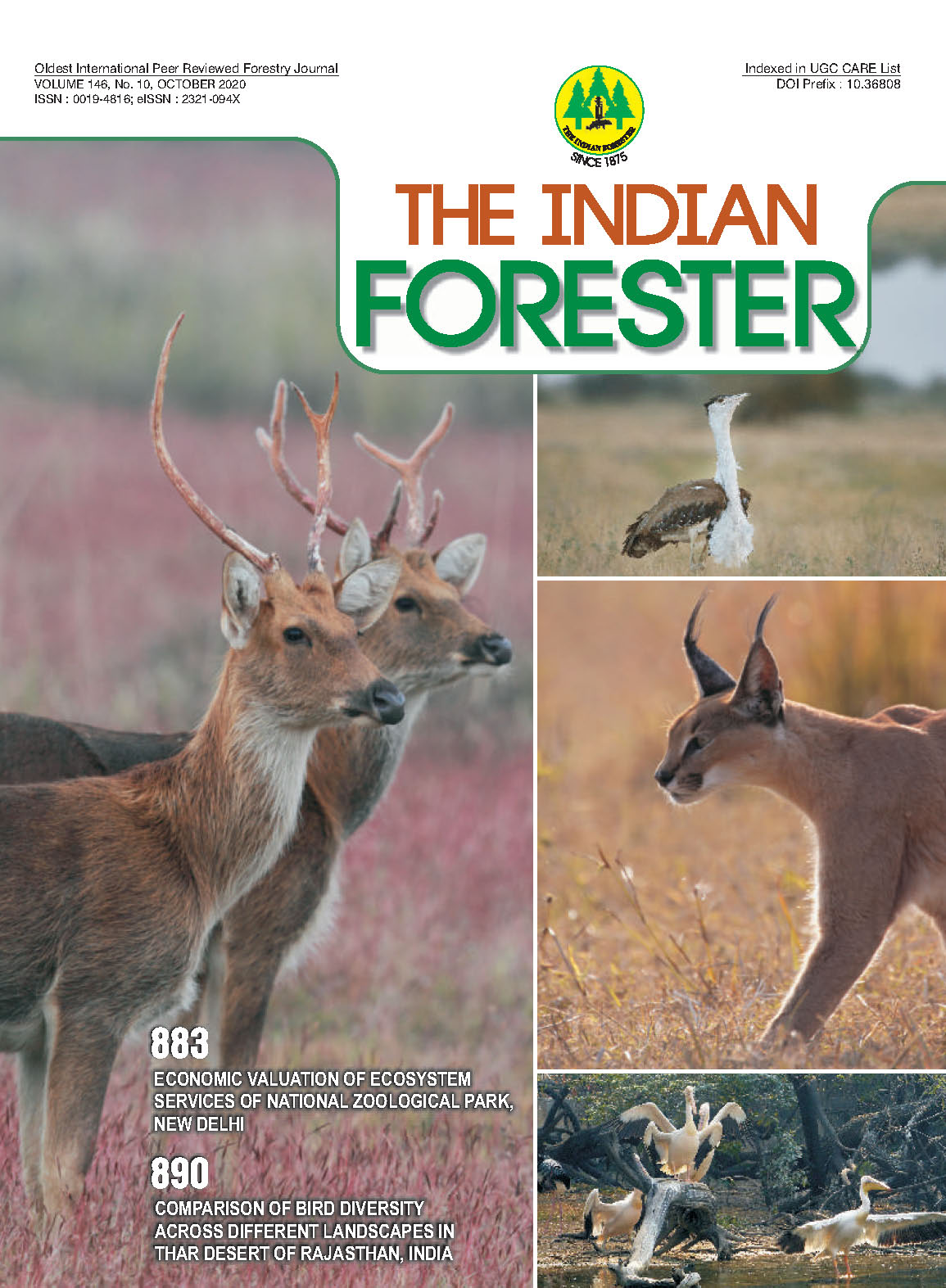Significance of Vulture Conservation: from Mythology to Modern era
DOI:
https://doi.org/10.36808/if/2020/v146i10/155439Abstract
No Abstract.References
Choudhury A. and Mitra D. (2019). Set free, captive vultures soar into air. The Telegraph
Decandido R., Subedi T. and Deborah A. (2012). Jatayu: the vulture restaurants of Nepal, Birding ASIA, 17: 49-56.
Houston D.C. (1985). Indian White-backed Vulture (Gyps bengalensis). In Newton, I.; Chancellor, R.D. (eds.). Conservation studies ofraptors. Cambridge, U.K: International Council for Bird Preservation. Pp. 456-466.
Jeimima P.J. and Frank G. (1997). DK Eyewitness EAGLE. Prey and feeding (Eyewitness Guides 69), London, Dorling Kindersley, pp. 28.
Markandya A., Taylor T., Longo A., Murty M.N., Murty S. and Dhavala K. (2008). Counting the cost of vulture declinean appraisal of the human health and other benefits of vultures in India. Ecological Economics, doi:10.1016/j.ecolecon.2008.04.020
Ranade S. (2019). Vultures- Bringing them back from the brink of extinction: Conservation breeding program a perspecive. Cheetal, 56: 1
Singh S.S. (2019). Vulture culture: How the bird was saved from extinction. The Hindu.
Downloads
Downloads
Published
How to Cite
Issue
Section
License
Unless otherwise stated, copyright or similar rights in all materials presented on the site, including graphical images, are owned by Indian Forester.





